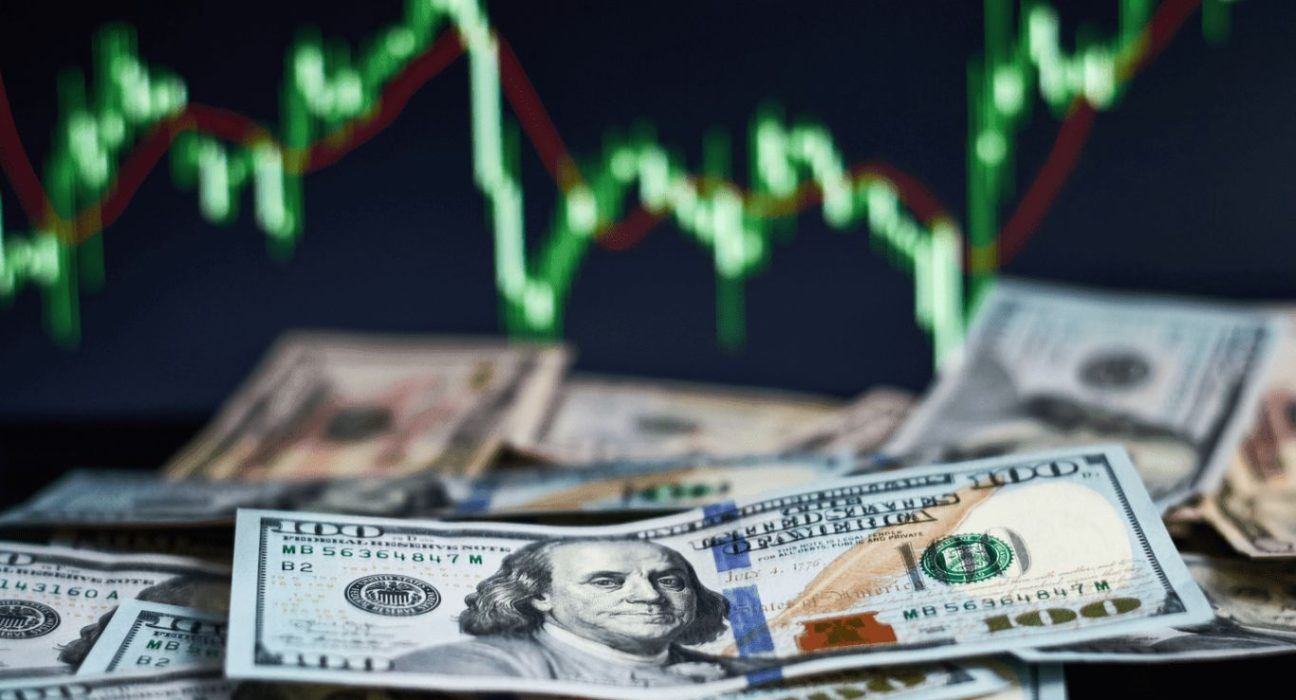The U.S. dollar index experienced a slight dip to 104.02 but remained relatively steady, not straying too far from its over two-month high achieved last week. This minor fluctuation can be attributed to the influence of higher Treasury yields, which have had a notable impact on the performance of the U.S. dollar.
The Significance of Treasury Yields on the U.S. Dollar Index
Treasury yields play a crucial role in determining the strength of the U.S. dollar index. When Treasury yields rise, it generally indicates an increased demand for U.S. government bonds. Consequently, this leads to a higher value of the U.S. dollar against other major currencies. Conversely, when Treasury yields decline, it suggests reduced demand for U.S. government bonds, resulting in a weaker U.S. dollar.
U.S. Dollar Index’s Recent Performance
The U.S. dollar index has been performing well in recent weeks, reaching an over two-month high before the slight dip to 104.02. This strong performance can be attributed to several factors, including positive economic data, increased investor confidence, and the relative stability of the U.S. economy. These factors have contributed to a favorable outlook for the U.S. dollar, attracting investors and supporting its value.
Impact of Higher Treasury Yields on the U.S. Dollar Index
The rise in Treasury yields has been a key driver behind the U.S. dollar’s recent strength. As yields increase, foreign investors are enticed by the higher returns offered by U.S. government bonds. This influx of capital strengthens the U.S. dollar, as investors need to exchange their local currencies for dollars to invest in these bonds. Consequently, the U.S. dollar index experiences upward pressure.
Factors Influencing Treasury Yields
Several factors contribute to the movement of Treasury yields, which, in turn, influence the U.S. dollar index. Economic indicators such as inflation rates, GDP growth, and unemployment figures play a significant role. If these indicators suggest a robust economy, investors perceive U.S. government bonds as more secure and attractive, leading to higher demand and subsequently higher yields.
Market Sentiment and U.S. Dollar Performance
Market sentiment also plays a vital role in shaping the U.S. dollar index. Investor confidence and risk appetite impact the demand for U.S. dollar-denominated assets. In times of economic uncertainty or global market volatility, investors tend to seek refuge in safe-haven assets such as U.S. Treasury bonds. This flight to safety strengthens the U.S. dollar and boosts the U.S. dollar index.
U.S. Dollar Index Outlook
Despite the minor dip in the U.S. dollar index to 104.02, the overall outlook for the currency remains positive. The rise in Treasury yields, coupled with the robust economic fundamentals of the United States, indicates continued strength for the U.S. dollar. However, it is important to closely monitor economic indicators and market developments, as they can quickly influence the performance of the U.S. dollar index.
One of the key drivers of the U.S. dollar’s strength is the rise in Treasury yields. As yields increase, investors are enticed by higher returns on their investments, making U.S. assets more attractive. This increased demand for U.S. assets, such as Treasury bonds, strengthens the U.S. dollar as investors convert their currencies to purchase these assets. Consequently, the U.S. dollar index experiences upward pressure.
Additionally, economic indicators play a vital role in shaping the performance of the U.S. dollar. Positive economic data, such as robust GDP growth, low unemployment rates, or strong consumer spending, can enhance market confidence in the U.S. economy and drive up the value of the U.S. dollar. Conversely, weaker economic data may lead to a decrease in the U.S. dollar’s value as investors seek alternatives.
Market sentiment also influences the U.S. dollar index. Geopolitical events, trade tensions, and shifts in investor risk appetite can all impact market sentiment and subsequently affect the U.S. dollar’s performance. Safe-haven demand for the U.S. dollar tends to increase during times of global economic uncertainty, while improved market sentiment and risk appetite may weaken the U.S. dollar as investors seek higher-yielding opportunities elsewhere.
While the current outlook for the U.S. dollar remains positive, it is essential to closely monitor market developments to gauge its future trajectory. Factors such as the Federal Reserve’s monetary policy decisions, global economic trends, and geopolitical developments can all influence the U.S. dollar’s performance. Changes in these factors can lead to fluctuations in the U.S. dollar index, highlighting the need for continuous assessment and analysis.
In summary, the stability of the U.S. dollar index, supported by the rise in Treasury yields, indicates the currency’s strength in the global market. Economic indicators, market sentiment, and global economic stability are all influential factors that impact the U.S. dollar’s performance. By closely monitoring these variables, market participants can gain insights into the future trajectory of the U.S. dollar and make informed decisions.










